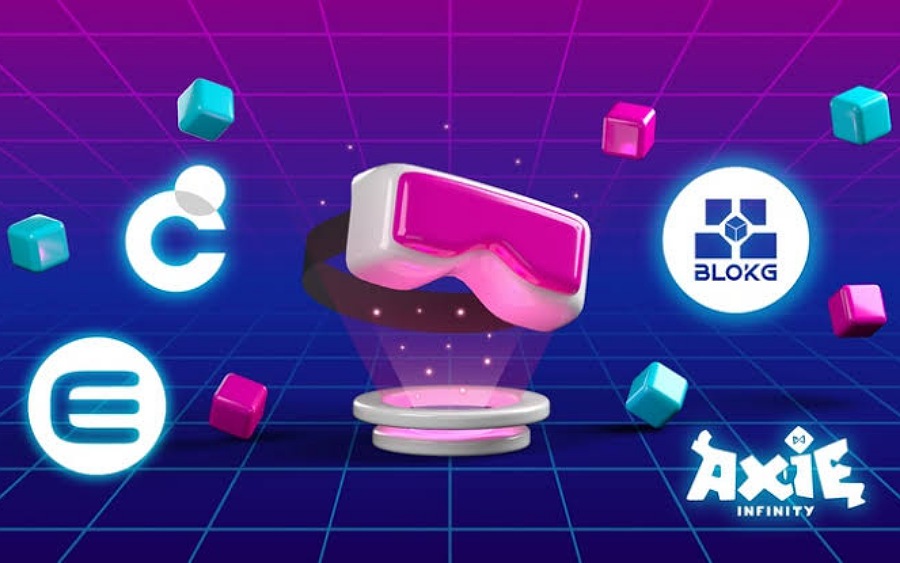By Daniel Levi
The popularity of the Metaverse has taken the internet by storm since Facebook changed its name to Meta in October 2021. The talk about the metaverse is slowly making its way into everyday conversations in the boardrooms, on the web, in mainstream media, and in pop culture. The metaverse could be worth $13 trillion by 2030, according to a report from Citi.
Although still in a nascent stage, the metaverse can be described as a digital world where the real and virtual worlds converge into a vision of science fiction. You can also think of the metaverse as a virtual world where millions of people could gather to work, play, and socialize in immersive virtual environments and communicate across shared spaces across different platforms.
From gaming to medicine, the metaverse has the potential to transform our ways of life. Some of the best metaverse applications are in areas such as education, gaming, medicine, finance, and immersive learning. As the metaverse evolves, we also see how creators and writers are using technology to share their creations and artwork.
Metaverse is the immersive virtual world you can experience through your computer or virtual reality headset. You might think of it as glorified gaming in which your avatar interacts with other avatars, fighting battles in games pioneered by Call of Duty, constructing buildings and landscapes a la Minecraft, or doing both in the classic Fortnite.
But now Facebook’s new “Meta” identity, and its massive investment in the consumer-ready Oculus VR headset, focuses all our attention on a technology that both tech enthusiasts and corporate giants believe can fundamentally change our lives. These players don’t consider the metaverse as a subset of the internet, but as a successor.
Once you have opened the door to other realities, there’s an infinite number of possibilities to experience as you migrate the real-to-virtual continuum, from the real world to a 2D camera perspective to a 3D interactive space. As we speak, Microsoft and Meta Platforms are partnering to create virtual workspaces, meeting rooms, and social networks. Roblox and Epic Games are hosting live and on-demand rock star concerts and virtual corporate events. Visionaries predict that everyone could experience walking on the moon or attending the Super Bowl. Shopping, schooling, training, architecture, healthcare, and social media will all be transformed.
As seismic as this will be, there are other forces joining the metaverse that promise to magnify its impact: blockchain and cryptocurrency. Naturally, every world needs an economy and digital currency almost seems created for just this purpose. But what will this convergence mean for those of us that are used to living in the real world?
Alex Lemberg can tell us. He’s the CEO of a fintech company Nimbus Platform. Alex brings over 27 years of experience on Wall Street and is a thought leader in this burgeoning field. “The opportunities are tremendous for everyone, spanning the physical and virtual worlds and all modes of VR, from non-immersive, to augmented, to fully immersive technologies. The integration of blockchain will significantly benefit both the development of the metaverse and adoption of crypto as our currency of choice.”
The fully functioning economies of virtual worlds are expanding rapidly and require intrinsic, autonomous digital currencies. Lemberg points to amplified gamer spending within the virtual sphere, like the NFT estate in Decentraland bought for $2.5 million, to illustrate the potential in monetizing AR and VR gaming. NFT avatars projects alone generate enormous value, with recent Cryptopunks selling for 7-12 million – BTC and EFT, of course.
“It’s intuitive and practical to utilize crypto for purchasing in these digital realms because blockchain is ideal for managing sales,” Lemberg continues. “Crypto wallets improve user experience and level of trust, and blockchain addresses broader concerns about privacy and security.”
These advantages are confirmed as platforms like Decentraland and Sandbox issue their own tokens. In these realms, gamers can create their own businesses to monetize themselves. For example in Decentraland, in a user-created casino gamblers, wagers, and dealers are paid in the token MANA. It’s fairly easy to see how these virtual assets transfer into real-world value as demand grows.
Lemberg sees broader AR and VR use cases utilizing existing gaming platform technology because it has already been developed. This translates into an expansion of the currency adopted by the platforms. “In the future, both physical and virtual NFT products and services will be advertised and acquired via interrelated markets utilizing cryptocurrency as the standardized legal tender of the whole metaverse.”
Ecommerce, he forecasts, will grow exponentially as shoppers are able to rotate and visualize products in their homes or walk through virtual malls. Advertising will be radically altered when users can evaluate products by interacting in their own or virtual settings. Retailers are now acquiring virtual storefronts as other entrepreneurs carve up the rest of the digital landscape. Virtual entertainment will dominate by immersing concertgoers and sports fans in venues that have never been accessible to everyone. Lemberg adds, “this doesn’t even begin to address B2B use cases such as training, architecture, and manufacturing.”
Blockchain and cryptocurrencies also have wider implications, Lemberg offers. With these technologies, the metaverse provides autonomy, security, and high-speed transaction, but it will also dramatically increase the activities available and participation of populations that were traditionally denied access to them.
Furthermore, blockchain and cryptocurrencies have the potential to decentralize platform ownership while providing peer-to-peer exchange. “Who will own the metaverse?” Lemberg asks. Of course, it’s now in the hands of mega-corporations that have the resources to develop the necessary interactive hardware and internet broadband, as well as the platforms themselves. But Lemberg concludes, “The inherent decentralized autonomous structure of blockchain and crypto makes it possible for user-generated content and distributed control of metaverse assets and future enterprises.”
That’s a vision of a future we can all welcome.



